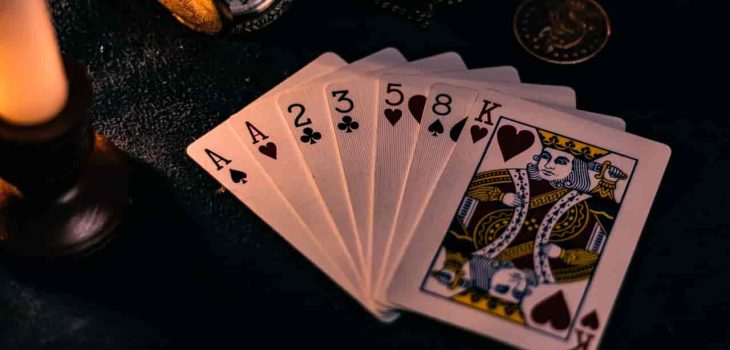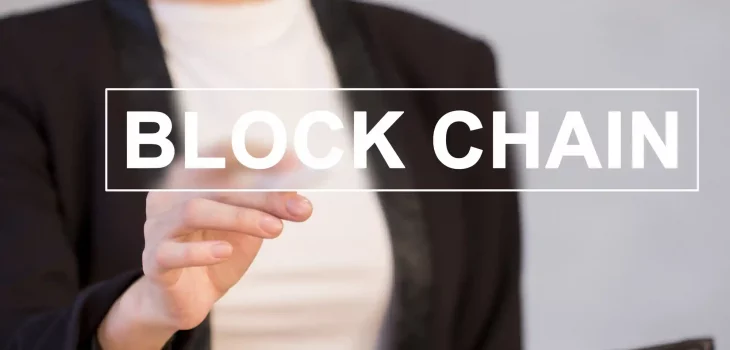The Fascinating History of the Deck of Cards
A deck of playing cards is a set of cards, made using a standard size and shape and in a standard configuration, for use in card games, such as poker, contract bridge and whist.
The standard Anglo-American deck contains 52 cards in 13 ranks of 7 or 8 cards. The ace ranks above the king. The ace can also be used as an 11 to fill a straight flush. In addition, two Jokers are sometimes included as unique cards (see below). Some decks have two extra cards called “Nines”, “Eights”, “Jack-Knaves”, or “Tens” to make up for the lack of a full rank of ten spots on the card. These extra cards are usually used to make up for the missing rank on each end of the deck (i.e., an eight spot on each end).
What is a deck of cards meaning?
The deck of cards meaning is a powerful tool for divination and fortune-telling. It’s a traditional tool used by many cultures and people worldwide.
The different suits of a deck of cards represent various aspects of life:
- Clubs – Clubs represent money, physical labor or work, and things related to the earth.
- Hearts – Hearts represent love, relationships and emotions such as joy, sadness and anger.
- Spades – Spades represent ambition, fear, death and loss.
- Diamonds – Diamonds represent power, wealth and good luck
List of names for the deck of cards
The names of a deck of cards are often used as the basis for card games. The most common deck consists of 52 cards divided into four s

uits. The suits are clubs (♣), diamonds (♦), hearts (♥) and spades (♠).
The ranks of high to low cards are A, K, Q, J, 10, 9, 8, 7, 6, 5, 4 and 3. The ace is the highest card in each suit; the king is the second-highest; and so on.
A full deck contains 13 ranks in each suit: ace through ten and jack through queen. There are four jokers in many decks of cards that have been printed with unique designs or images.
Each suit has an additional card called an honour card or court card that represents a person. Jacks represent knaves or servants; queens represent ladies; kings represent lords, and jacks represent pages or squires.
The names of the card symbols
- Ace – one.
- Face cards – Jack, Queen, King.
- Small cards – Ace (high), 2, 3, 4, 5, 6, 7, 8, 9, 10, Jack, Queen, King.
- Aces can be high or low.
The deck of cards has a history that goes back centuries.
The English pattern pack was created in Britain, which imported French playing cards from Antwerp and Rouen by 1480. The English pattern’s earliest cards date back to 1516.
The British began manufacturing their cards in the 16th century. Card production started in London. They were based on Rouen’s pattern, but unlike traditional French cards that featured names, the court cards had no names.
The English pattern changed over time, losing some of its Rouen elegance and flavour and becoming more stylized. Many details were lost, and the figures took up more space on the cards.
The first cards of this type were all single-headed. However, around 1860, double-headed cards became popular and are now used in modern decks.
Around 1880, corner indices were introduced. The English pattern was popularized all around the globe in the 19th century. It is still used today, even in countries that have traditional suits. The American design was copied onto larger cards.
James I of England passed a law that required an insignia to be displayed on the card as proof of payment for a tax on local manufacturing of cards.
This led to creating the fanciful design and the manufacturer’s logo on the Ace of Spades. Decks of playing cards printed in the United Kingdom and sold there were subject to taxable duty.
The ace of spades also indicated the printer’s name and the fact that taxes had been paid. Also, the packs were sealed with a wrapper containing government duty.
How many cards in a standard deck
A standard deck of playing cards consists of 52 cards, divided into four suits. Each suit has 13 ranks, numbered 2-10 and two court cards (Jack, Queen and King).
In a standard deck, there are four suits:
Spades, hearts, diamonds and clubs. Each suit has 13 ranks: 2-10 and two court cards (Jack, Queen and King). The cards in each suit have different names depending on the pattern on their back: for example, the four spades are called “spade”, but the four diamonds are called “clover”. The design on each card’s back tells you which suit it belongs to.
How many hearts are in a deck of cards?
In a standard deck, there are 52 cards, which include the jokers and the two other unique cards. Of those 52 cards, there are four suits: spades, diamonds, clubs and hearts. Each suit has 13 cards in it.
How many hearts are in a deck of cards?
The answer is 13. A full deck of playing cards contains four suits — spades, diamonds, clubs and hearts — with each suit consisting of 13 cards. In total, there are 52 different types of playing cards available for use in various games.
It’s terminology
These are standard terms that apply to both individual and collective playing cards but are not limited to the 52-card pack:
- The face cardwas made up of a jack, queen, or king.
- An honour cardis a card that earns a bonus or payment for being captured or held in play. Honours in a bridge are the aces, court cards, and tens (A-K, Q and J, 10); in whist, the courts and aces (A-K, Q and J); and in the bridge, the aces (Q, J).
- A wild cardrepresents another card the owner can use for her purposes.
- Pip cards, also known as numerals, are cards with a number between 2 and 10.
- Deucesare also known for “2” cards.
- the “3” card also knows Treys.
Deck of cards is a popular game that people of all ages can enjoy.
If you’re looking for a fun and easy-to-learn card game, the deck of cards is one of the most popular choices.
The deck of cards is a great way to pass the time when you’re bored. Many different games can be played with cards, including:
- Bingo. Bingo is a game where players try to get five numbers in a row across or down on their bingo card. The first person to get all their numbers wins!
- Blackjack. Blackjack is another popular card game that can be played with two or more people. Each player receives two cards and tries to get closer to 21 than the dealer without going over 21.
- Hearts. Hearts is another card game that can be played with two or more people. Players take turns trying to win tricks containing hearts by playing higher hearts than other players have in their hands.
- Spoons. In this fast-paced game, each player tries to grab as many spoons from an imaginary table as possible before someone else does!
Frequently Asked Questions
How much cards are in a deck
A standard deck of 52 playing cards contains two Jokers.
What cards are in a deck?
A standard deck of playing cards contains 52 cards, including two jokers and two face cards. There are 52 different values in the deck, each represented by a number from 1 to 10. There is no “empty” card; every card has a value that can be assigned to it.
How many cards in a suit
The four suits of cards are Spades, Hearts, Diamonds and Clubs. Each suite has 13 ranks, with each rank containing both court cards and the value of the suit (in this case, Diamonds), so there are a total of 13 × 4 = 52 cards.
How are 52 cards divided?
The ten cards that make up each deck suit (ice, clubs, spades and diamonds) are called court cards. The remaining four cards in each case are called face cards.
What are the 4 types of playing cards?
The standard 52-card deck consists of four suits uniquely identified by their picture. The four suits are spades, hearts, diamonds and clubs. Aces rank 10 to low (2 through 9), with no values. The face cards rank A to K with 2s and 3s, known as jokers, ranking all other cards at face value.
What are the cards called in a deck?
The 52 cards in a deck are called “faces.” For example, if you have a deck with four kings, you would say there were four kings on the table. If you were holding your hand with two kings and six queens, you would say there were two and six queens on the table.
13 52 simplified
A deck of playing cards contains 13 cards: the 2, 3, 4, 5, 6, 7, 8 and 9 of spades; the jack, king and queen of hearts; the ace of diamonds; the 10 of clubs; the jack of diamonds and nine and ten of spades.
What’s in a deck of 52 cards?
The first thing to know is that there are four different types of cards: the Ace, King, Queen and Jack. Each suit has its symbol, and each card has a picture of a particular animal (or part of an animal).
For example:
- Ace – The Ace is the lowest card in any deck. It’s the symbol for 1.
- King – The King is the second-highest card in any deck. It’s the symbol for 2.
- Queen – The Queen is the third-highest card in any deck. It’s the symbol for 3.
- Jack – The Jack is the fourth highest card in any deck. It’s the symbol for 4
What are the 4 types of cards in a deck?
Four kinds of cards make up a deck: spades, hearts, diamonds and clubs.
How are 52 cards divided?
The number of cards in each suit is determined by the number of points on each face card. The ace has 1 point, and the king has 10 points. Each card has an assigned value from 1 to 10 (inclusive). For example, a spade has a value of 1, and a heart has a value of 6.
Why is a deck of cards 52?
There are 52 cards in a deck because it allows for easy addition and subtraction when calculating values or counts. If you have two decks, you can add all their faces to get your total count.
Summing Up
In conclusion, there is no doubt that the deck of cards is one of man’s most brilliant and fascinating inventions. The deck of cards has survived through the centuries, undergoing numerous changes while still enjoying a prominent role in modern society. This begs the question: will these wonderfully masterfully created art pieces be around a hundred years from now? We’ll have to wait and see.








3 Comments